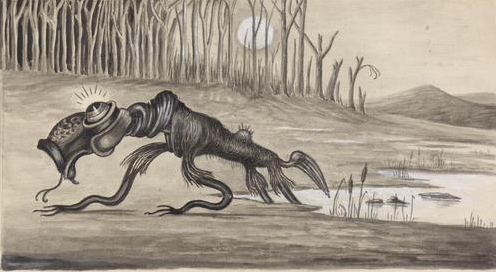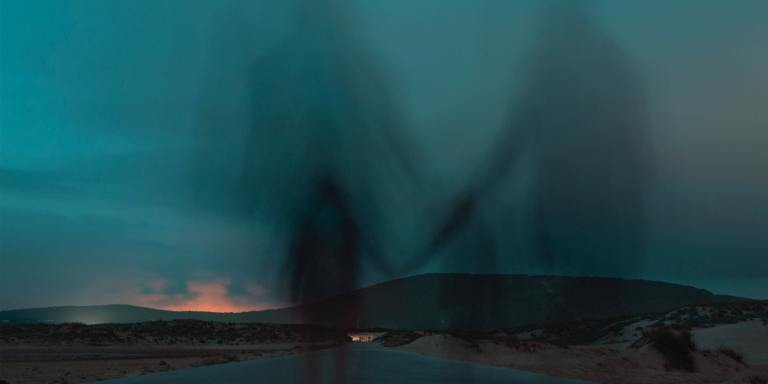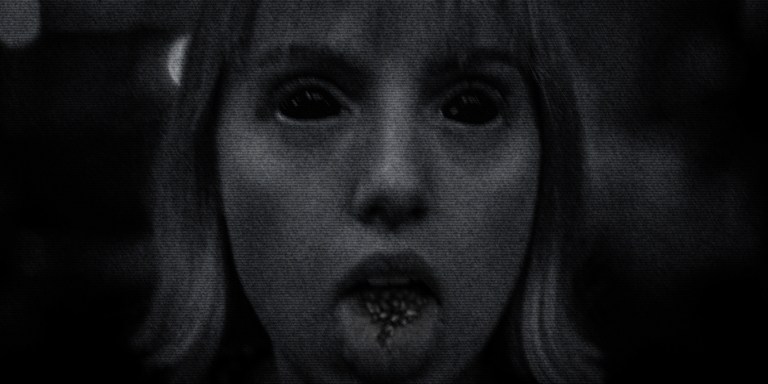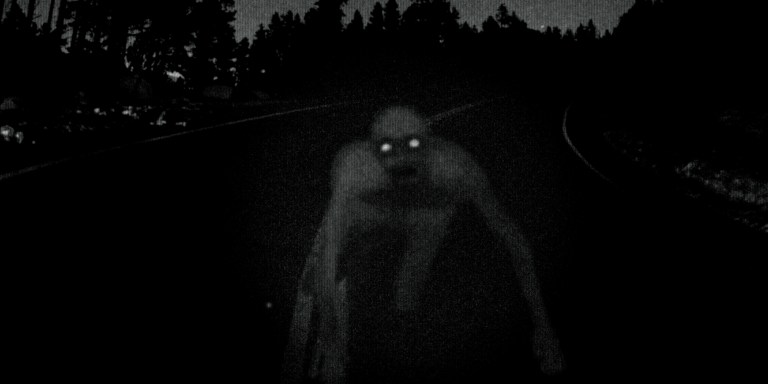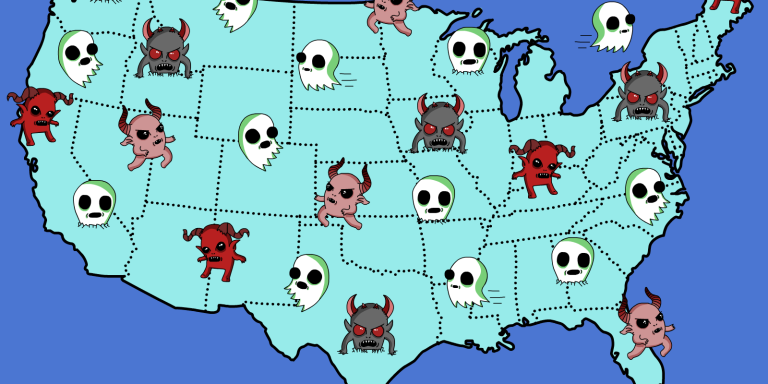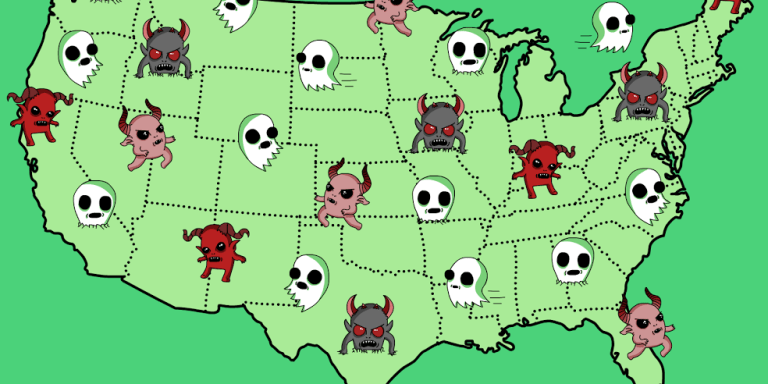No one knows exactly what The Bunyip looks like — but they know to stay away.
The Bunyip, Explained
[*] The Bunyip gobbles up children and livestock if they inch too close to the edge of the water. It mainly preys upon women and children in the darkness of the night.
[*] The Bunyip is an aquatic mammal. It has smooth skin, ‘apricot’ eyes, and a bellowing cry that it releases before pouncing on its victims and devouring them.
[*] The Bunyip is a mythical creature from Australian Aboriginal mythology. It lurks in swamps, billabongs, creeks, riverbeds, and waterholes. The most frequent reports of Bunyip sightings came from the southeastern colonies of Victoria, New South Wales, and South Australia in the 1840s and 1850s.
[*] Legend says that a man named Bunyip once broke the Rainbow Serpent’s greatest law by eating his totem animal. After that, he was banished and transformed into an evil spirit that lured tribesmen and their animals into the water to eat.
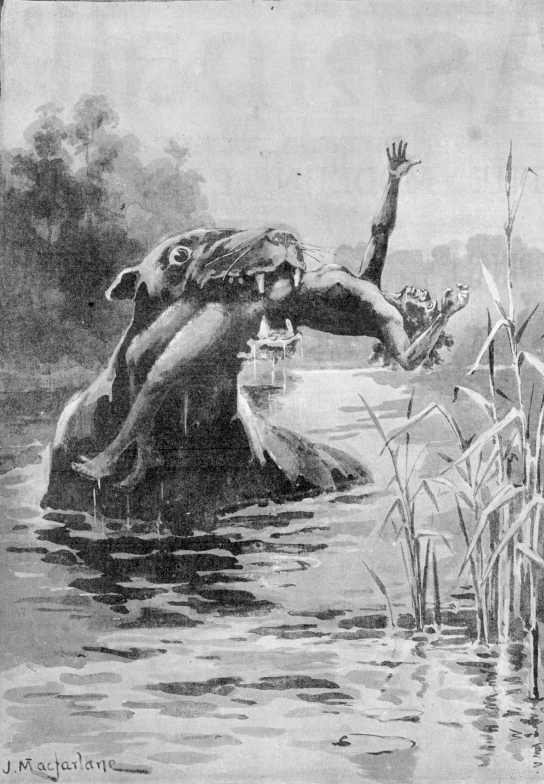
[*] Aborigines have differing opinions on the Bunyip. Some believe it is a bloodthirsty murderer, but others have called the Bunyip a punisher sent to Earth to bring justice to anyone who commits evil acts and to protect the wildlife.
[*] The Bunyip is believed to have supernatural powers. It can alter the water level, cripple victims with its roar, and hypnotize humans to act as its slave.
[*] In 1851, a newspaper called The Australasian published a report about a Bunyip being speared after killing an Aboriginal man. The creature was eleven paces long and four paces in width. Aboriginal people used to visit the sight of the creature every year and outline its form, but those outlines have been lost over time.
[*] The Bunyip has long claws, but it prefers to kill by hugging its victims to death.
[*] Witnesses have trouble describing the appearance of The Bunyip. The most popular description is that it looks like an enormous starfish. However, some people claim it looks like a snake with a beard. Others argue it has a dog-like face, a crocodile-like head, dark fur, a horse-like tail, flippers, walrus-like tusks, and a duck-like bill.
[*] The earliest sightings describe the Bunyip as having countless eyes, sharp claws, a fast speed, and a hallow boom that it uses to communicate. Other witnesses claim it has one large eye on its head and a mouth on its stomach.
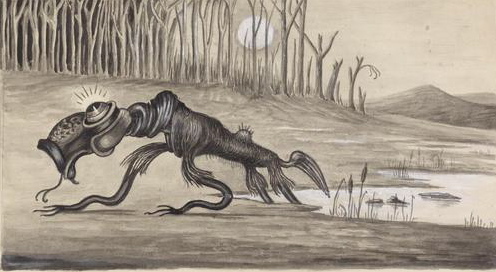
[*] Some say the Bunyip has the characteristics of a bird and an alligator. They believe it has a long bill with serrated edges like a stingray. Its body and legs are thick and strong like an alligator, but its forelegs are much longer than its hind legs.
[*] The Bunyip swims like a frog in water, but walks on its forelegs on land with its head erect. When it stands, it reaches twelve or thirteen feet.
[*] Over the years, fossils have been uncovered that could be associated with the Bunyip. There were remains of an unknown animal discovered in 1818 by Hamilton Hume and James Meehan in Lake Bathurst in New South Wales that resembled a manatee or a hippopotamus. In 1830 there were unidentified fossils found in the Wellington Caves that were much larger than the ox or buffalo. In July of 1845, fossils were found near Geelong and a newspaper article was written called Wonderful Discovery Of A New Animal which claimed the fossils were evidence of the Bunyip.
[*] In January of 1846 a skull was found in the Murrumbidgee River near Balranald. It was placed in the Australian Museum in Sydney and labeled as a Bunyip skull, but it was later proven to be the skull of a disfigured calf.
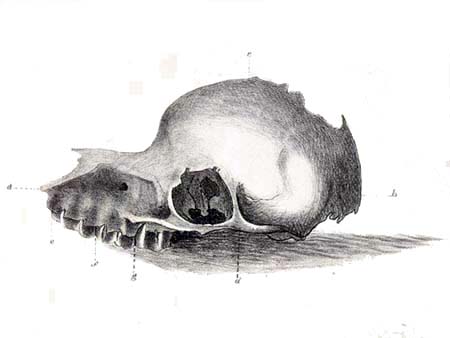
[*] The first written description of the Bunyip came in 1845. It claimed the creature laid massive pale blue eggs and had deadly claws, powerful hind legs, a brightly colored chest, and an emu-like head. This is why some people believe the Bunyip was only a or a southern cassowary or an Australasian bittern, which is sometimes referred to as the bunyip bird.
[*] In 1933, Charles Fenner suggested that the Bunyip was actually a seal. Sometimes the animals were found as far inland as Overland Corner, Loxton, and Conargo, so they could have been mistaken as the Bunyip.
[*] Some researches believe the Bunyip is a prehistoric marsupial, the Diprotodon australis, which was supposed to go extinct 46,000 years ago.
[*] The word Bunyip comes from the Wergaia language of Aboriginal people of South-Eastern Australia. It translates to ‘devil’ or ‘evil spirit’. In the 1850s, the word was also used as a synonym for ‘imposter’ or ‘pretender’. In 1853, it was used to describe Australians aspiring to be aristocrats. In the 1990s, it was used to describe members of the conservative Liberal Party of Australia opposition. The Bunyip has also been called kianpraty and wowee. ![]()
